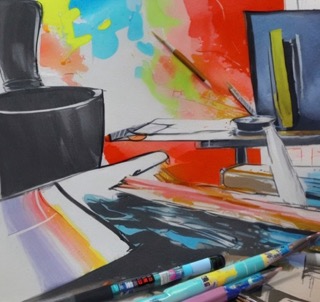A team of researchers from the University of Colorado Boulder’s ATLAS Institute unveiled Bio-e-Nails, biodegradable press-on nails made from algae and seashells. These eco-friendly nails are customizable and can be continually reused, setting a new standard for sustainable beauty practices.
The beauty and sustainability industries are getting a makeover, thanks to an innovative new creation from researchers at the University of Colorado Boulder’s ATLAS Institute. Introducing Bio-e-Nails, biodegradable press-on nails designed to reduce waste and promote sustainable practices in the rapidly growing $700 million press-on nails industry.
In a recent study, the ATLAS Institute team unveiled these colorful and endlessly customizable nails, which are made from algae-based agar or chitosan derived from seashells and other animal products.
Unlike traditional nails that contribute to plastic waste, Bio-e-Nails can be melted down and reshaped repeatedly.
“With Bio-e-Nails, there can be a second life, a third life, a fourth life,” lead author Eldy Lázaro Vásquez, a doctoral student at the ATLAS Institute, said in a news release. “The material can be remelted and reshaped into new objects. You can make a new nail, for sure, but also a coaster for your coffee cup.”
The project reflects a novel approach to sustainable fashion, emphasizing functionality and aesthetic appeal without compromising environmental responsibility.
“Sustainability goes beyond merely replacing plastic with a substitute material,” added senior author Mirela Alistar, an assistant professor at ATLAS and the Department of Computer Science. “Both the designer and the user also need to change their mindset. That type of change, which considers the entire lifecycle of the wearable, is what we are tackling through our research in the Living Matter Lab.”
Beyond their environmental advantages, Bio-e-Nails also deliver on customization. From adding food coloring to incorporating tiny computer chips that can interface with smartphones, these nails can reflect personal style and tech-savvy flair.
The researchers presented their Bio-e-Nails in March 2025 at the Tangible, Embedded and Embodied Interaction (TEI) conference in France, showcasing the potential of their designs to reshape the manicure industry.
The process of making these nails is accessible to the public, with easy-to-follow instructions using readily available craft supplies.
According to Lázaro Vásquez, the ritual of going to a nail salon is a significant form of self-expression for many, which underscores the importance of making sustainable alternatives accessible and appealing.
“[Nails] can be a reflection of your personality,” she added. “They represent something that comes from you,”
The current manicure trend not only impacts personal health but also contributes to substantial plastic waste. Chemicals used in nail salons, like methyl methacrylate, can pose health risks to both customers and workers, while discarded plastic nails add up in landfills. For a greener alternative, Bio-e-Nails offer a refreshing choice that keeps materials in use for as long as possible.
The Bio-e-Nails initiative started as a class project by a student named Julia Tung, who explored bioplastic nails as part of her coursework. This promising idea was then expanded and refined by Lázaro Vásquez and her fellow graduate students Sepideh Mohammadi, Latifa Al Naimi and Shira David, who developed various biomaterial formulations and fabrication methods.
Bio-e-Nails are meant for short-term use, according to Lázaro Vásquez, making them ideal for occasions.
The research team suggests three ways to extend the life cycle of their biodegradable materials: reusing, remelting and, as a last resort, composting.
“Composting should be the last alternative,” Lázaro Vásquez added. “We want to keep the materials in use as long as we can. In biodesign, it’s not just about replacing traditional materials with biodegradable ones — it’s about rethinking the entire design process, considering the life cycle of the material and eventual products, and how they can stay in circulation and be transformed before they ever return to nature.”
For those interested, detailed instructions for making Bio-e-Nails can be found online, encouraging users to be part of this sustainable shift in beauty practices.
Source: University of Colorado Boulder

